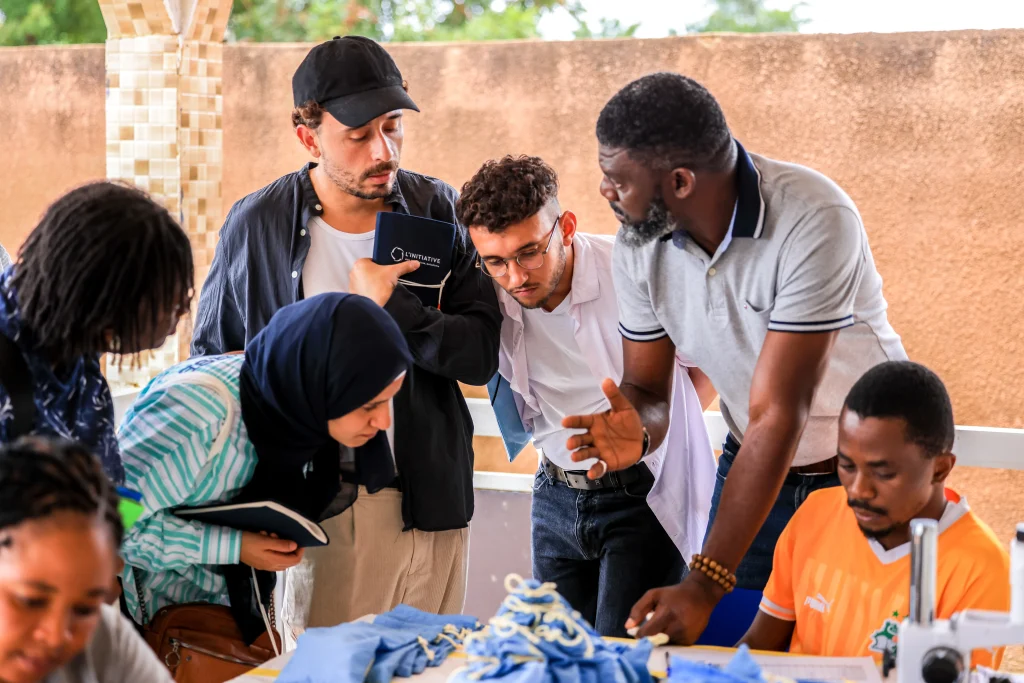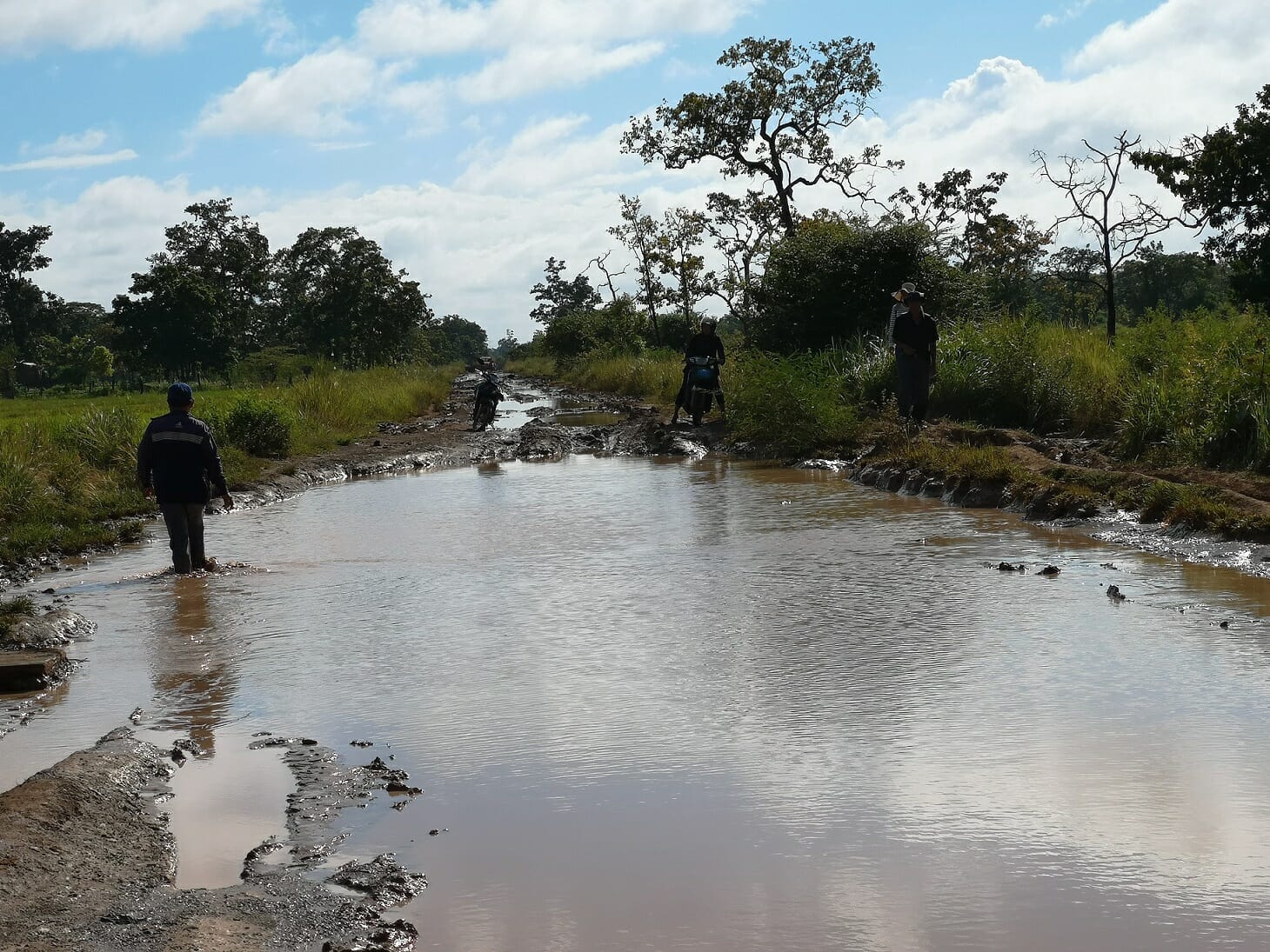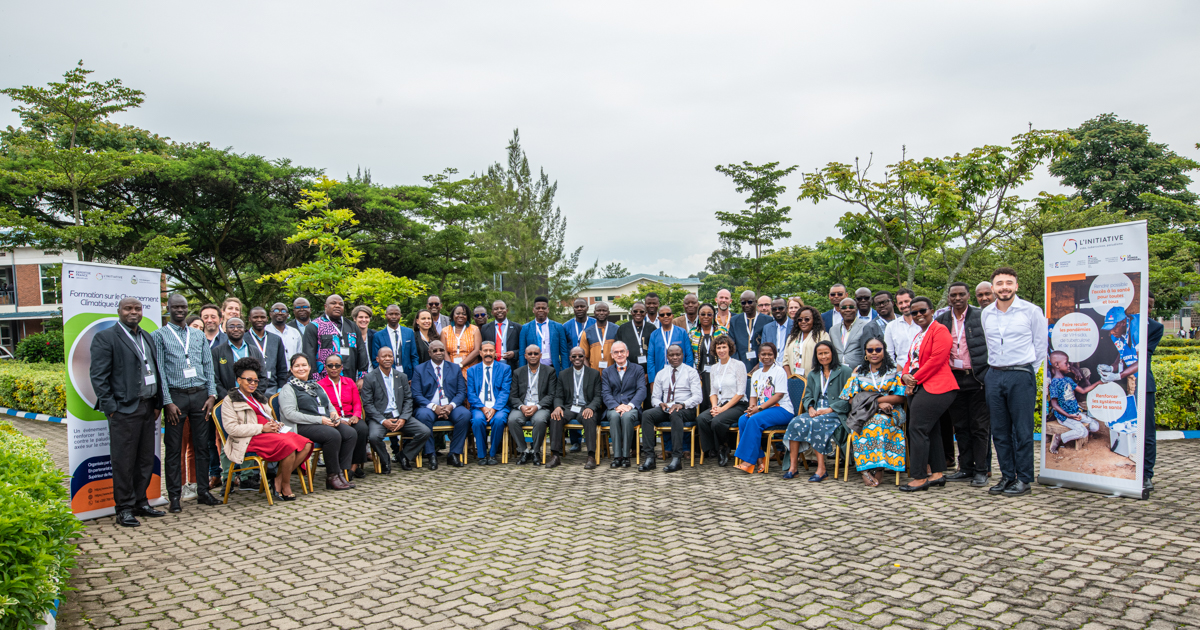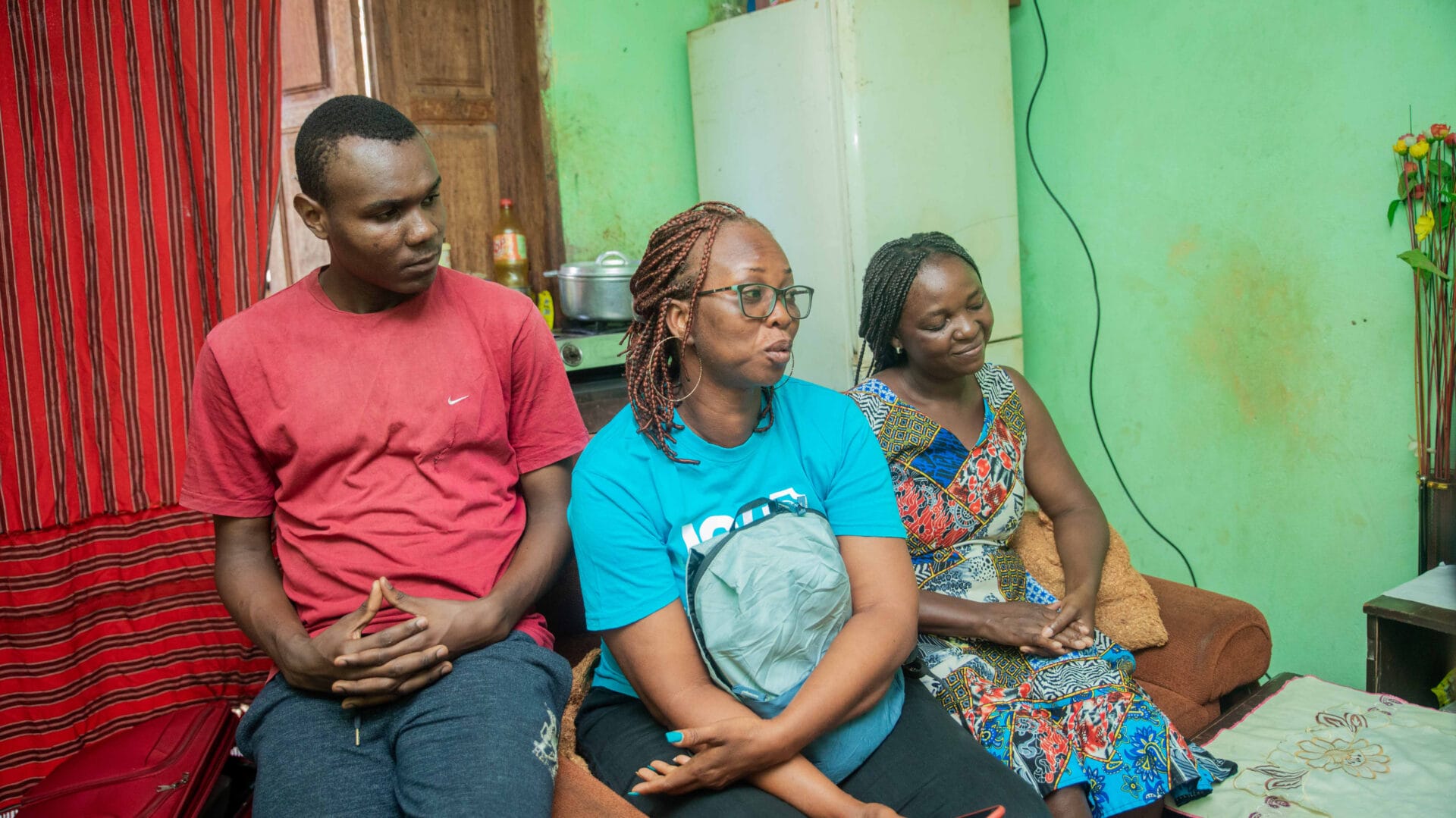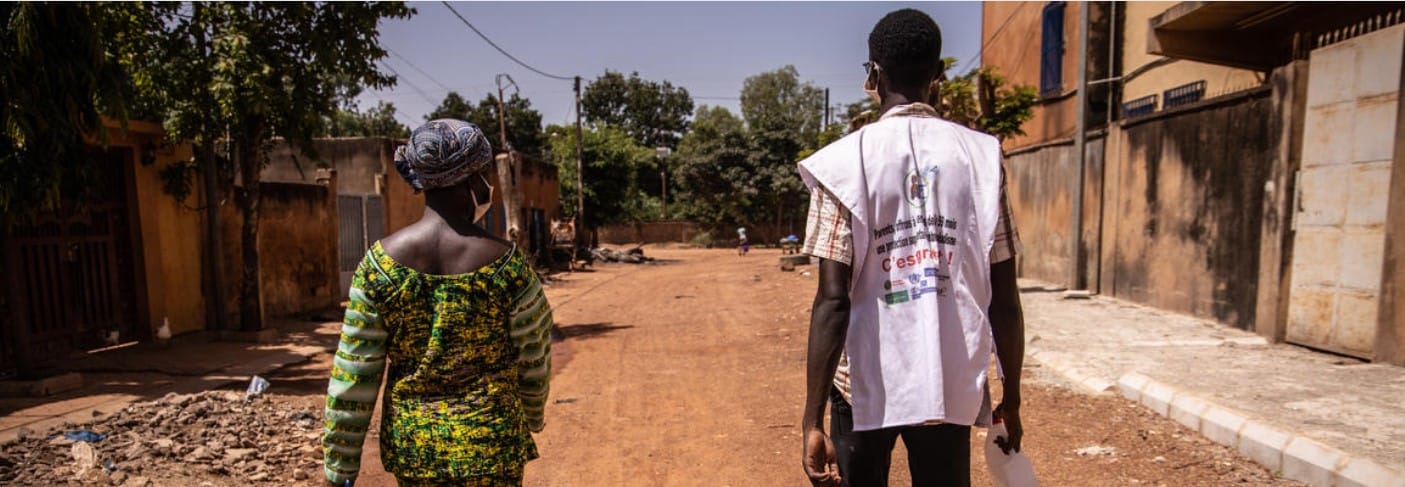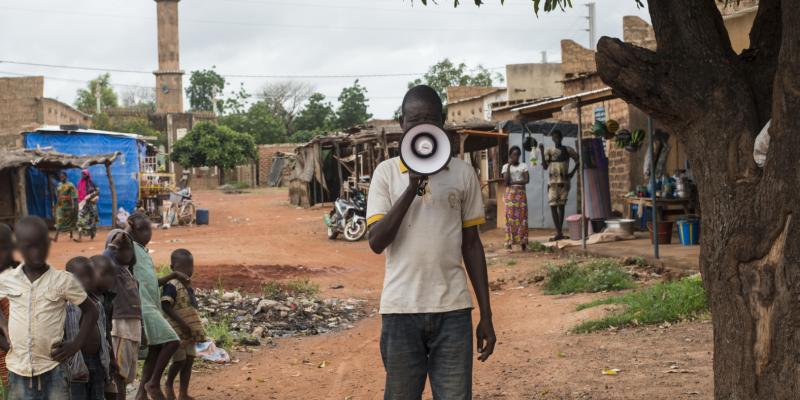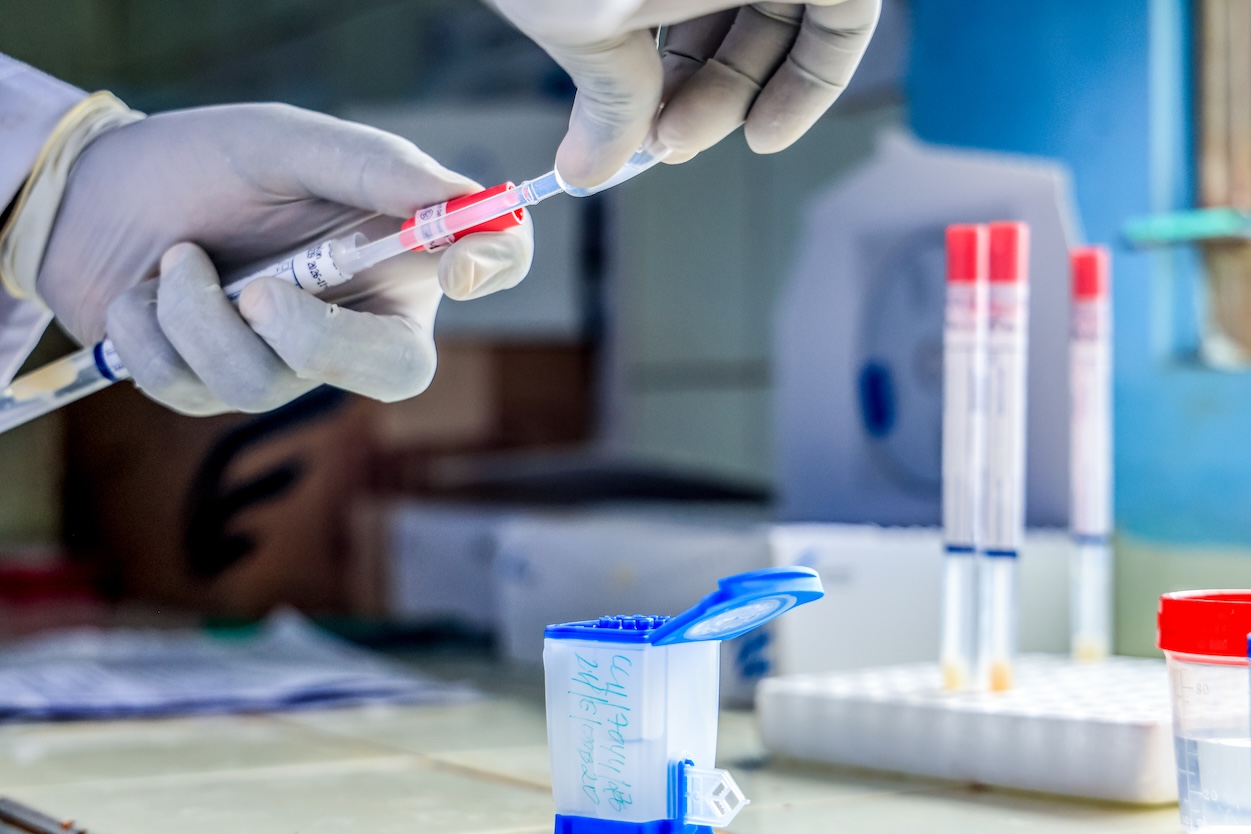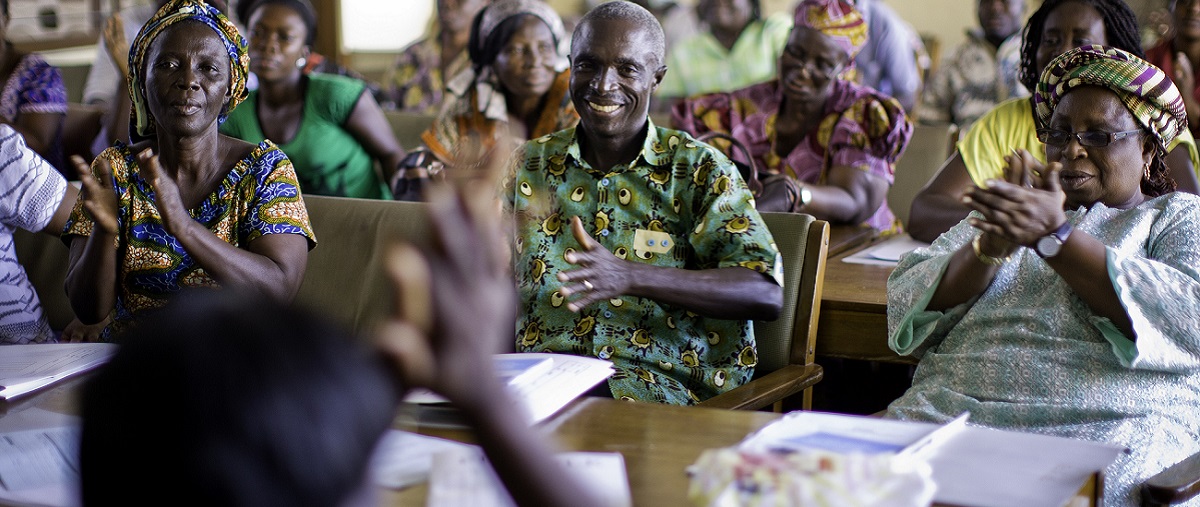TrapNet: an innovative malaria control method in sub-Saharan Africa

Africa accounts for 94% of all malaria cases reported worldwide—amounting to 246 million—and 95% of malaria-related deaths, or 569,000, in 2023. The majority of these cases are found specifically in sub-Saharan Africa. This region is home to the two most dangerous Plasmodium parasites responsible for transmission to humans: Plasmodium falciparum and Plasmodium vivax. In addition to this heavy health burden, new challenges are emerging, such as the growing resistance of mosquitoes to insecticides, which calls for a reassessment of current control strategies. As part of the “Prevent Malaria” project, the Swiss Centre for Scientific Research in Côte d’Ivoire (CSRS) has developed TrapNet with support from L’Initiative—an innovative device designed to effectively capture mosquitoes. To better understand this system and observe the field tests, teams from L’Initiative traveled to Korhogo and Abidjan in Côte d’Ivoire.
In addition to health crises, the growing resistance of humans to antimalarial treatments, and challenges related to climate change, the fight against malaria now faces a new major obstacle: the increasing resistance of mosquito vectors to insecticides, which is undermining the effectiveness of traditional prevention tools. A key intervention in reducing transmission, long-lasting insecticidal nets (LLINs) are gradually losing their protective power due to the biological adaptation of Anopheles mosquitoes. This concerning evolution in resistance mechanisms calls for an adaptation of preventive approaches and the urgent development of alternative solutions to sustain the progress made in controlling the disease.
TrapNet: An Innovative Mosquito Trapping Device to Better Adapt to Resistance
In this context, the Swiss Centre for Scientific Research in Côte d’Ivoire (CSRS) has developed a device that shows promising results: TrapNet. Its operating principle is based on a box that can be adapted to any type of mosquito net, equipped with four funnel-shaped openings strategically positioned at the top. Infrared analysis has shown that mosquitoes attempt to enter from the top of the net in 90% of cases.
According to preliminary results, the addition of the TrapNet device multiplies the number of mosquitoes captured and eliminated by 4.5 times, thereby improving both individual and community protection for vulnerable populations in a context of mosquito resistance to insecticides..
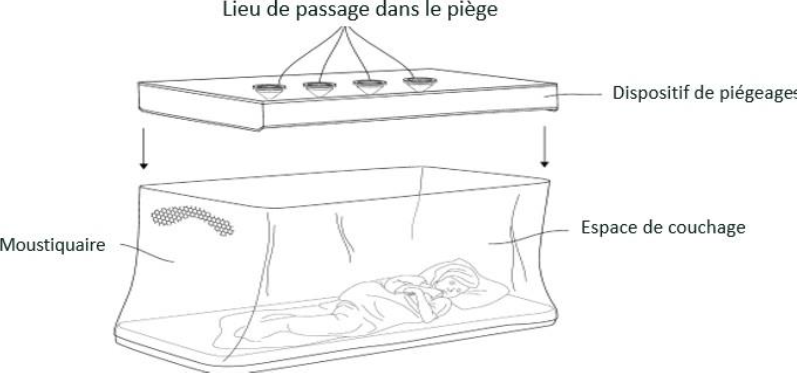
Immersion in the Ivorian Pilot Project
In September 2024, teams from L’Initiative headed north to Korhogo, in Côte d’Ivoire, where the TrapNet project is partially deployed. On site, researchers from the CSRS were finalizing the preliminary entomological survey ahead of the pre-intervention study. The goal of this phase is to assess the frequency of parasite transmission from mosquitoes to humans (the entomological inoculation rate).
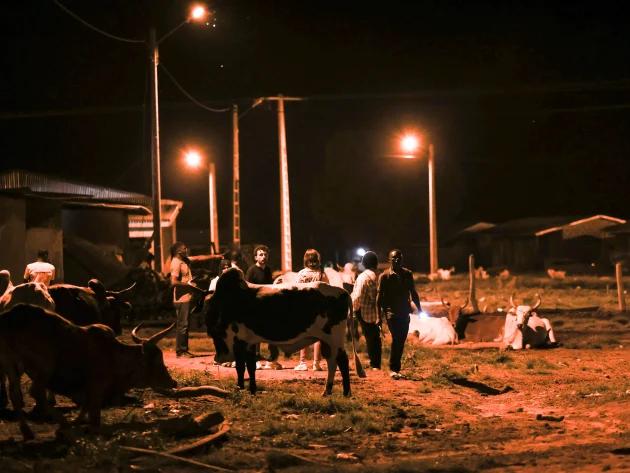

L’Initiative’s team arrived at dusk in one of the test sites: Soumon, a village with around 250 inhabitants. In this small village, the entomological surveillance operation follows a specific protocol. In each household, one person is stationed inside, another outside. Equipped with a flashlight, collection tubes sealed with cotton, and small bags labeled by the hour, they capture mosquitoes throughout the night. These tubes are collected the next day by the CSRS team and transferred to the TrapNet project’s operational base in Korhogo. The city is located near the targeted villages. Each mosquito captured, each recorded biting time, provides valuable data to better understand vector behavior. This entomological survey will later be replicated in experimental huts built in both Benin and Côte d’Ivoire to test the TrapNet device.

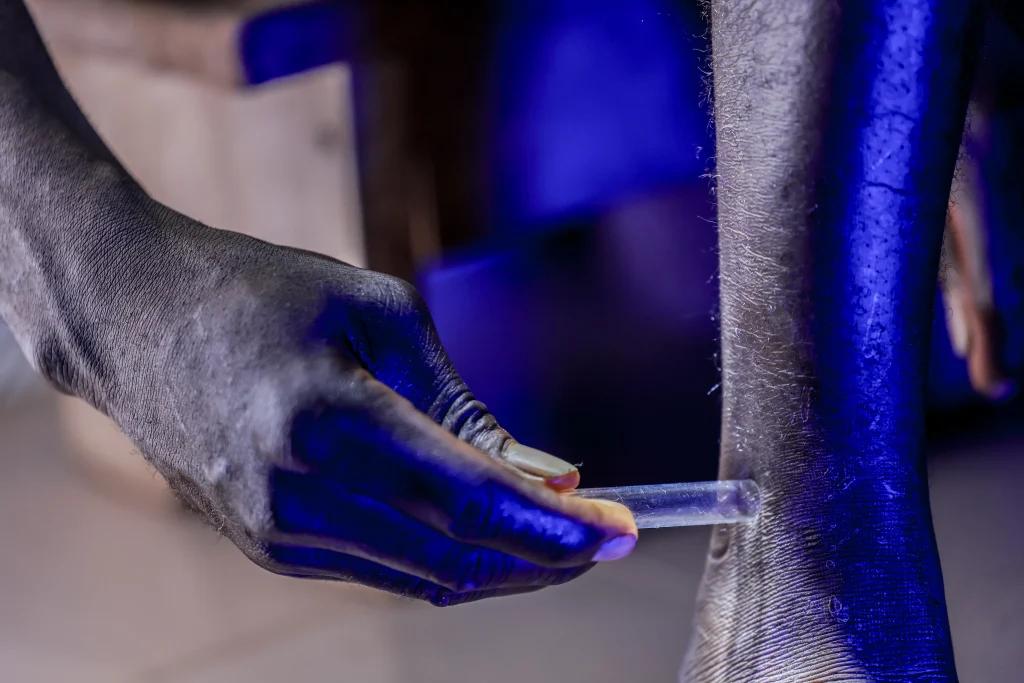



At the Heart of the Entomological Work in Korhogo
L’Initiative’s team then returned to Korhogo to observe the identification and preservation phase of the collected mosquitoes. Under the microscope, the TrapNet teams determine the species of each captured mosquito. The goal is to identify the dominant species in each area to better understand the local entomological profile. Once identified, the specimens are placed in small tubes and kept cold. They are then sent to Abidjan, where they are tested using molecular techniques to detect the presence of the parasite responsible for malaria.
Beyond the TrapNet device itself, this entomological survey aims to understand mosquito behavior, density, and insecticide resistance. This information will help evaluate the impact of interventions—such as the commonly recommended LLINs—on reducing exposure to infectious mosquitoes.
In parallel, epidemiological surveys are being conducted among the local population. These aim to measure malaria prevalence—that is, the proportion of people carrying the parasite. Blood samples are collected to estimate infection rates and gain deeper insight into local transmission dynamics.
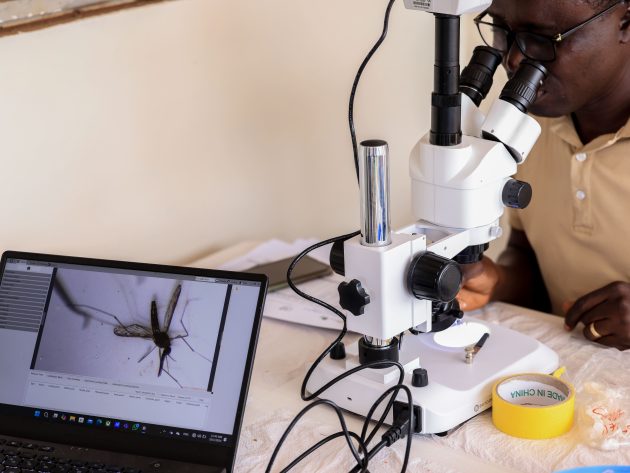

Testing Insecticide Resistance: A Key Step
L’Initiative’s team had the opportunity to observe the results of tests conducted by Dr. Chouaibou and the rest of the field team at the Korhogo base—specifically, the tests on mosquito sensitivity to insecticides.
Mosquito larvae are collected from natural breeding sites or from facilities where they are reared. These larvae, belonging to target species such as Anopheles gambiae, are raised to adulthood under controlled conditions. The adult mosquitoes are then exposed to various insecticides, and their mortality rate is calculated. If this rate falls below standard thresholds—typically between 80% and 90%—it may indicate resistance. This makes it possible to assess resistance trends across the different study areas. These data are crucial for anticipating changes in malaria transmission and for adapting control strategies by guiding decisions on which insecticides or alternative methods to use. If mosquitoes in a given area show resistance to the insecticides used in bed nets, then new control techniques—like the TrapNet device—must be implemented.
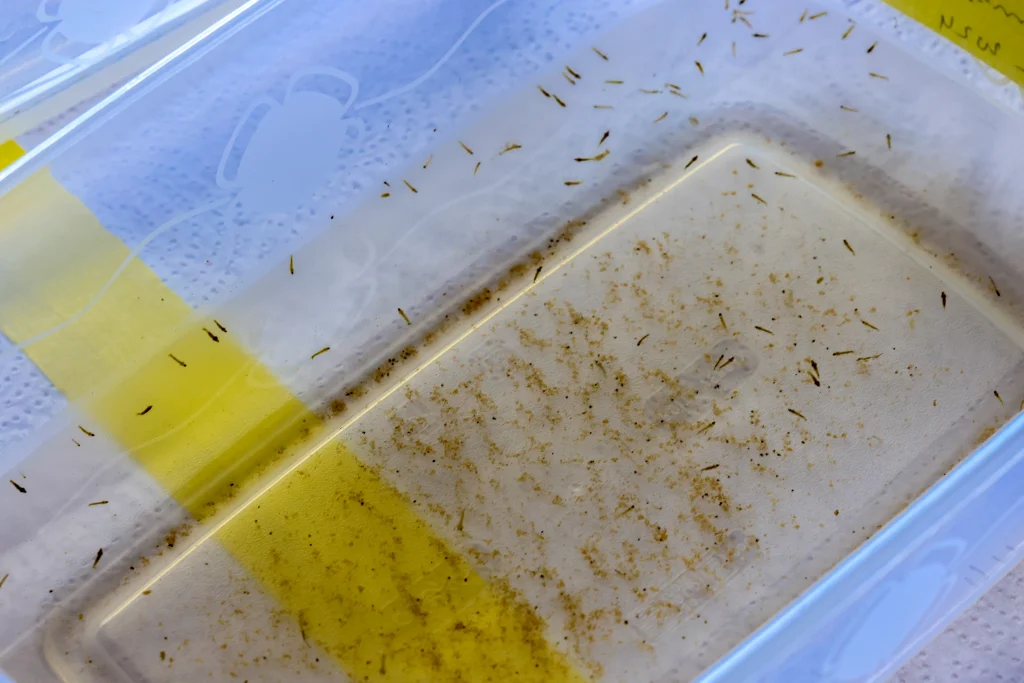

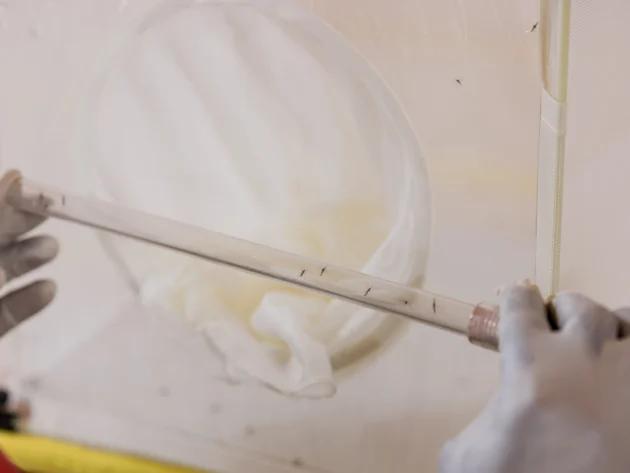
Final Visit to the CSRS and Future Prospects for TrapNet
L’Initiative’s team spent a final day with members of the CSRS to discuss the challenges encountered in the field and to review the significant progress that the innovative TrapNet approach could enable.
The next steps will require strengthened collaboration among stakeholders to develop effective advocacy strategies that can support the adoption of this technology. At the same time, consolidating preliminary results, best practices, and lessons learned will be a valuable asset in ensuring successful replication in other regions.
